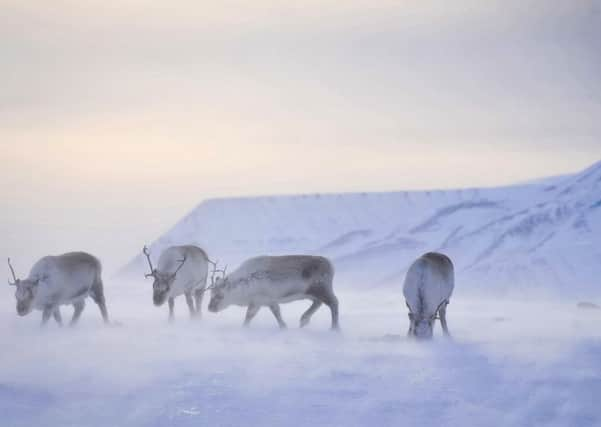Arctic reindeer are shrinking, warn Scottish scientists


Arctic reindeer are becoming smaller and lighter due to the impact of climate change on their food supplies, say Scottish scientists.
Over a period of 16 years between 1994 and 2010 the weight of adult reindeer studied in Svalbard - a group of islands near the North Pole - fell by 12% from 55kg to just over 48kg.
Advertisement
Hide AdAdvertisement
Hide AdWarm winters are producing more rain which then freezes on snow, covering the pasture beneath with an impenetrable layer of ice that the deer cannot break through.
As a result, female reindeer are going hungry and aborting their calves or giving birth to much lighter young, the scientists believe.
Lead researcher Professor Steve Albon, from the James Hutton Institute in Scotland, said: “The implications are that there may well be more smaller reindeer in the Arctic in the coming decades but possibly at risk of catastrophic die-offs because of increased ice on the ground.”
Another factor is thought to be a doubling of reindeer numbers over the past 20 years which has led to greater competition for food.
The findings were presented at the British Ecological Society’s annual meeting in Liverpool.
Ecologists from the James Hutton Institute, the Norwegian Institute for Nature Research and the Norwegian University of Life Sciences have been studying measuring and weighing reindeer in the high Arctic since 1994.
Each winter they catch, mark and measure 10-month-old reindeer calves, returning each year to recapture them and track their size and weight as adults.